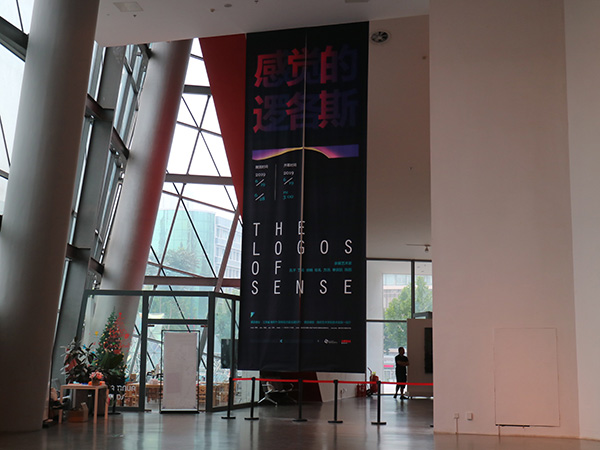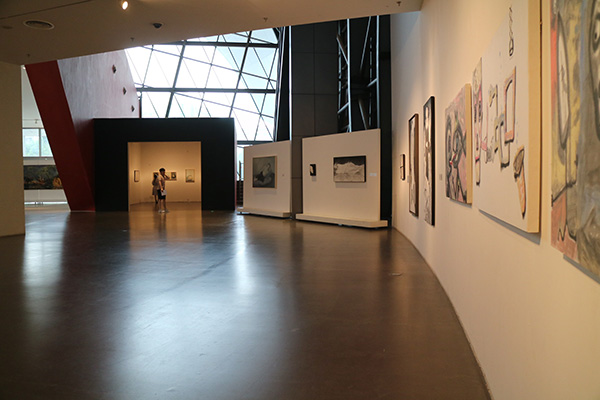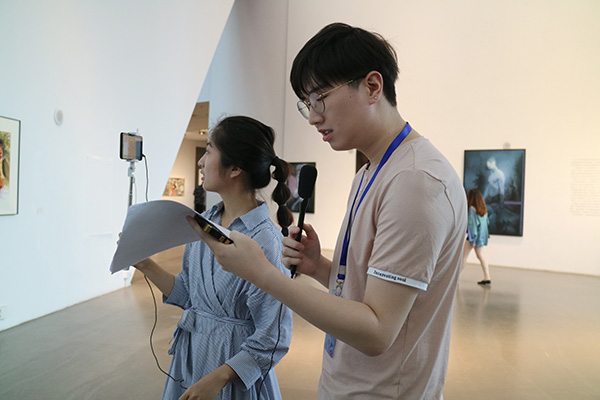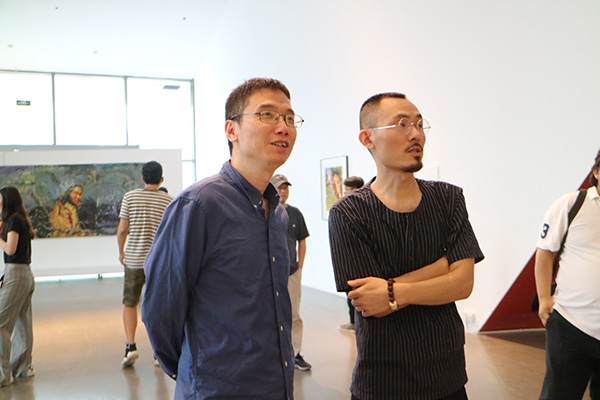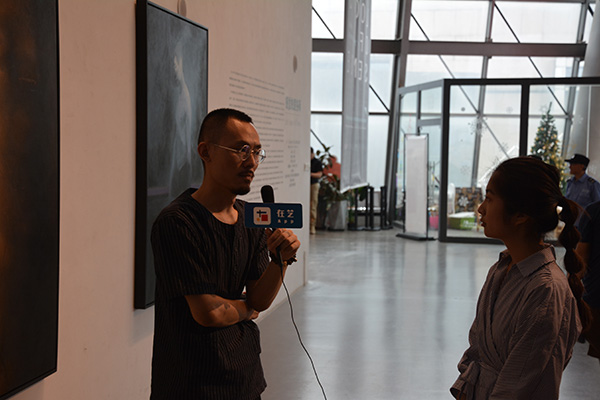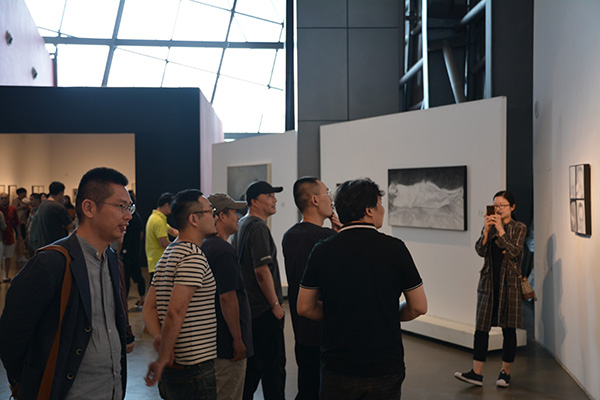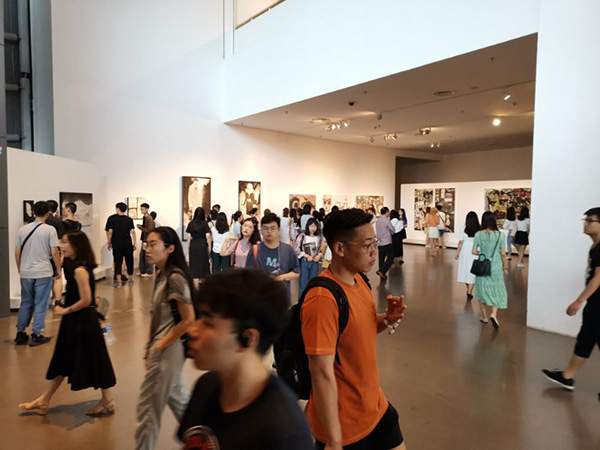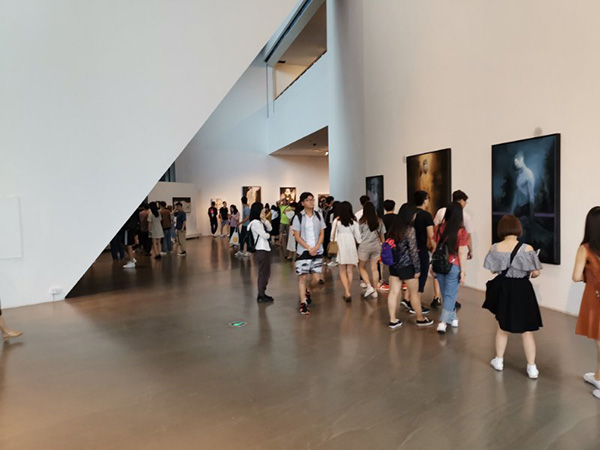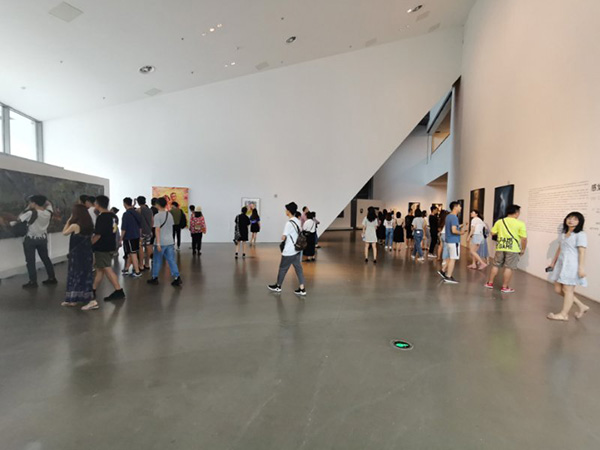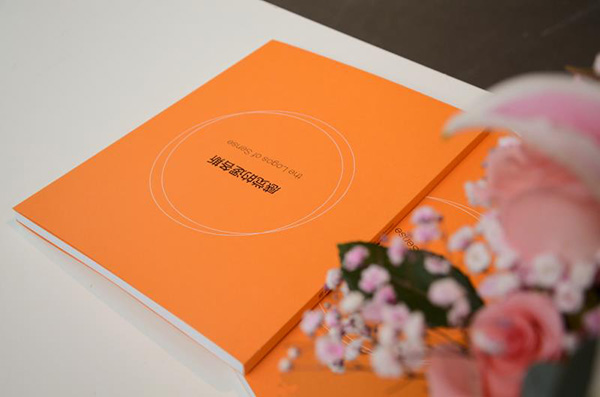The Rebellion of Image and theNew Logic of Painting
Zhang Qiang
Selbst dann bin Ich die Welt (Imyself is the whole world)
By Richard Wager
In1839, the French Academy of Sciences and the French Academy of Arts officiallyrecognized photography as "a technology and art".Google and Microsoft have introduced AI painting technology in recent years.Painting, as an ancient skill, faces external challenges that are severe anddiverse. But this is not the biggest challenge. The biggest challenge one comesfrom painting itself, namely: how the painting image is made. The 19th centuryartists brought revolutionary influence to the image making by resolutelygiving up rough optical instruments. In the 21st century, we have reasons toask: Will technology become the master of painting? Can art replace religion asa medium of soul? Can the state of aesthetic anemia be reversed?
KongQian once said: when sketches are drawn, they are only responsible to thepainters’ souls. His sketches have all the elements of a complete work, almostperfection like "incarnation." In his paintings, the image rises up,swollen, densely diffused, radial convulsions, and the wild gesture interpretsthe" antinomies. His work resists any superficial interpretation with stubbornness,and then completes the subversion of mediocrity in a very aggressive manner ina mutant artistic language. His series of works constitute "weird utopia"; Kafka's the Metamorphosis was revived on theeasel. He has transitioned from a precise depiction of the anatomy of the humanbody to a surrealistic exaggeration; from rigorous text narrative toapocalyptic music. In such a process of rheology, Kong Qian has always been walkingaround the abyss. Undoubtedly, in this game full of taboos, one step in thewrong direction means catastrophe for a self-respecting and proud artist. It isthis almost insane prudence that creates the complexity of a certain chaoticstate, that is to say, a "clump" in the sense of semiotics. Amongthem, east and west, tradition and modernity show a fuzzy adhesion of flesh andblood. "Confucius never talks about: Weirdness,Power; Rebellion and spirits to “Weirdness, Power; Rebellion and spirits "to " Confucius never talks", in the midst of it, Kong Qian findshidden clues from the analects of his ancestor: Confucius. He does not stopblazing ahead. Instead, he uses these clues as the antibodies of art criticism toresist the erosion of the decay of modern arts.
Justas the director Tarkovsky believes that "Afilm is the sculpture of time ", the two youngartists Chen Peng and Fang Kai are obsessed with the skillful use of technologyto measure the gray degree of time. If we define technology as a neutral word,it is easy for us to find in their works the human nature folds that have beenimmersed with the passing years and the elegance and dignity of the peopleunder the yoke. Their work awakens the "gazing "sothat any careless " sweeping "is a kind profane.The viewer needs to go out of the narrow field of physics to reach the field ofthe soul, returning from the "mutual watching" of the portrait to the"inner watching" of the soul, that is to say, the portrait should notmerely be the copy of visible matter but the X-ray of the soul. The paradox isthat the portrait becomes the mirror image of the artist's heart, and the glowof the picture reflects the artist's own emotions or the depth of sense. Thiskind of mirror reflection can be called the painting game. It is the basis ofthe new logic of portrait painting. In order to make this logic moreself-consistent, the artist needs to view the simplicity as a virtue and shyaway from the temptation of pretense. As artists, Chen Peng and Fang Kaiusually leave people the impression of "being reluctant to talk ".This is in line with what Zhao Wuji said: "Tobe a good artist, it is better for you to shut up!"
XuChang is inspired by many classical masters, but he is more inclined topersonal narration. For him, family and friends in private state are the bestobjects to paint, especially his mother. In his painting, the sick mother is bathedin divine halo, which is a common pattern in Western icon paintings in theclassical period. He believes that the filler of the picture is vitality andnot just the pigment itself. Vitality is the key to the success of the work. Hedoes not seem to be an adventurer. Rather, he enjoys the thrill of winning inssteady pace and regards roughness as a methodology. It is Wu Li’s painting thatechoes Xu Chang’s paintings. As a native of Hunan province, Wu Li’s paintingsare full of wildness. The characters in the painting are full of tremblinghuman nature. The charged body changes the pain and despair into a sad songbetween the twisted struggles: the supreme ecstasy and deepest sadness. In thelong-term artistic practice process, he has not developed a kind of" barbarism"style, which surpass the cartoon school and kawayi painting schools in modern art. He firmly believes that goodpainting won’t deceive people, and good viewers have a certainty at firstsight. He regards art as a journey without return. This kirnd of mentality ofdeath determines the toughness and thickness of Wu Li's works.
Asa Christian, the artist Shan Dingkai internalized the influence of Westernreligious civilization into the traditional Chinese brush and ink, thusdeveloping a unique personal style. His works are full of dark Gothic style.Semantically speaking, Gothic is a pun, which means that the barbaric Gothictribe or the "infinite closeness to God." The skillful use of theBible story forms an "intertextual relationship" with the classictext in his works. So, what does the involvement of classic text mean forpainting? Shan Dingkai is not eager to give an answer. He tears humanity intopieces and combines with divinity to create a "complete image",because only the "complete image" can reach the depths of the soul,which is helpful to the liberation of chained imagination. To this end, ShanDingkai is not even afraid to avoid "error." Regarding the "error",Ding Cheng, a poet and artist, seems to be more extreme. He said: "Every wordI wrote is a failure, and all the failures are my intentions." Thissentence is full of the sinister paradox of Sisyphus, just like his works. InDing Cheng's works, absurdity became the norm, a torture of our soul. All kindsof inexplicable stunning faces are like the abstractversion of the flattened Easter Island statues. This rare "weird aesthetics"is a surging experience of life.
"Howa painting directly acts on the nervous system is a very, very difficult question",Artist Bacon once stressed. Inthis exhibition, we try to avoid "retina art" and hope to provideseveral answers to this question.
